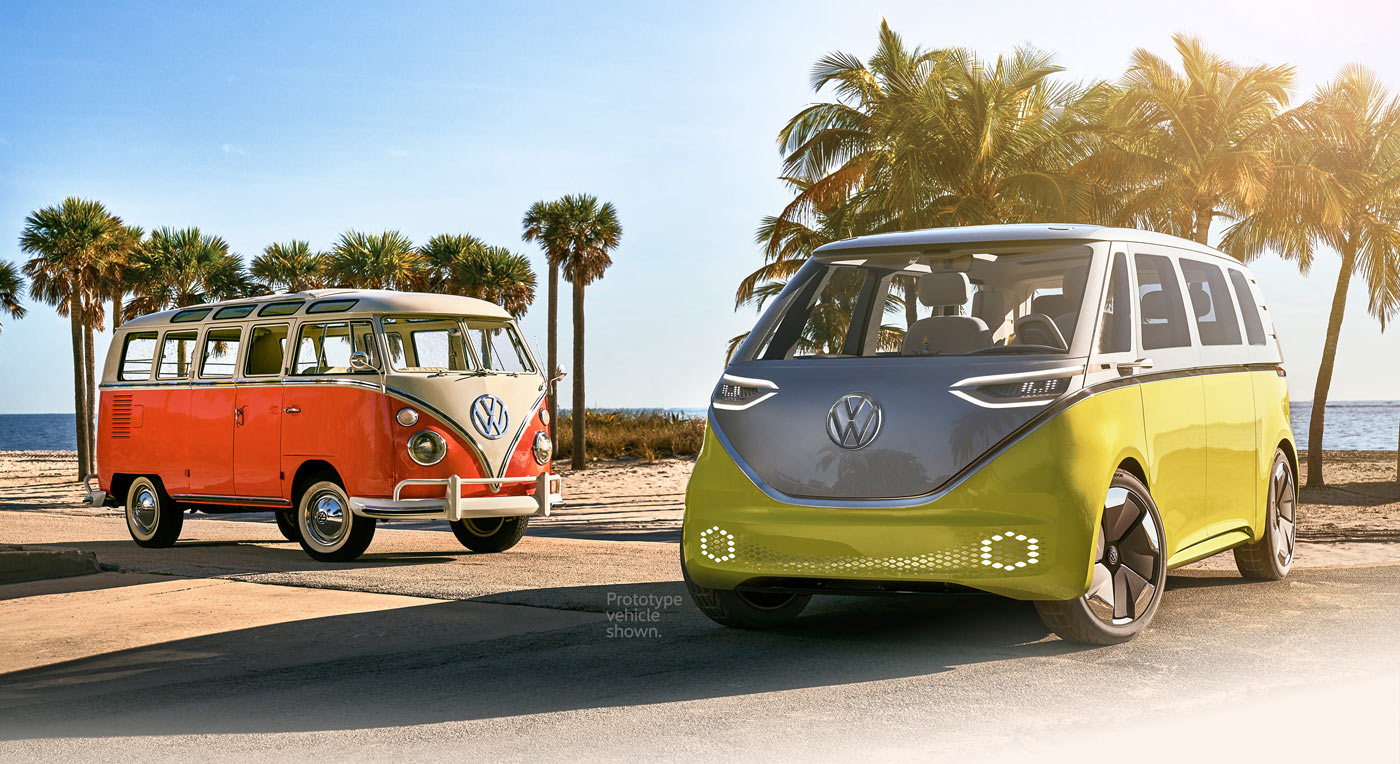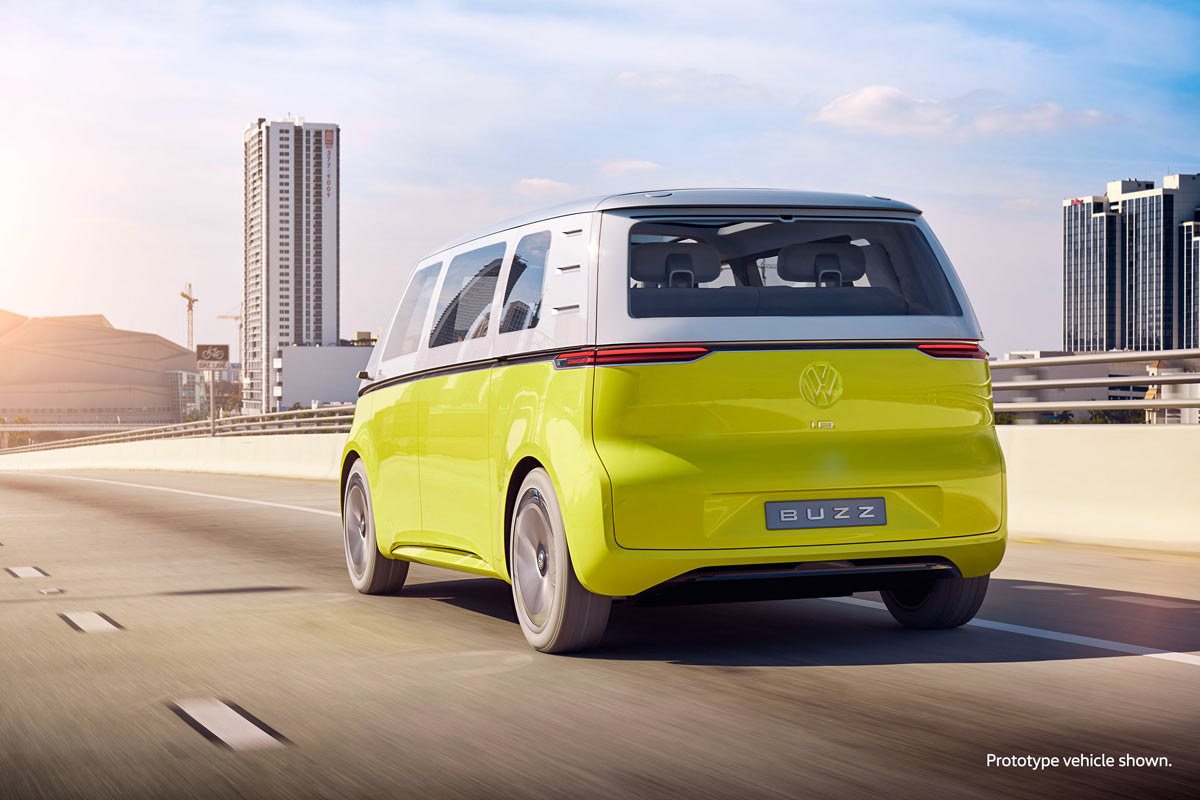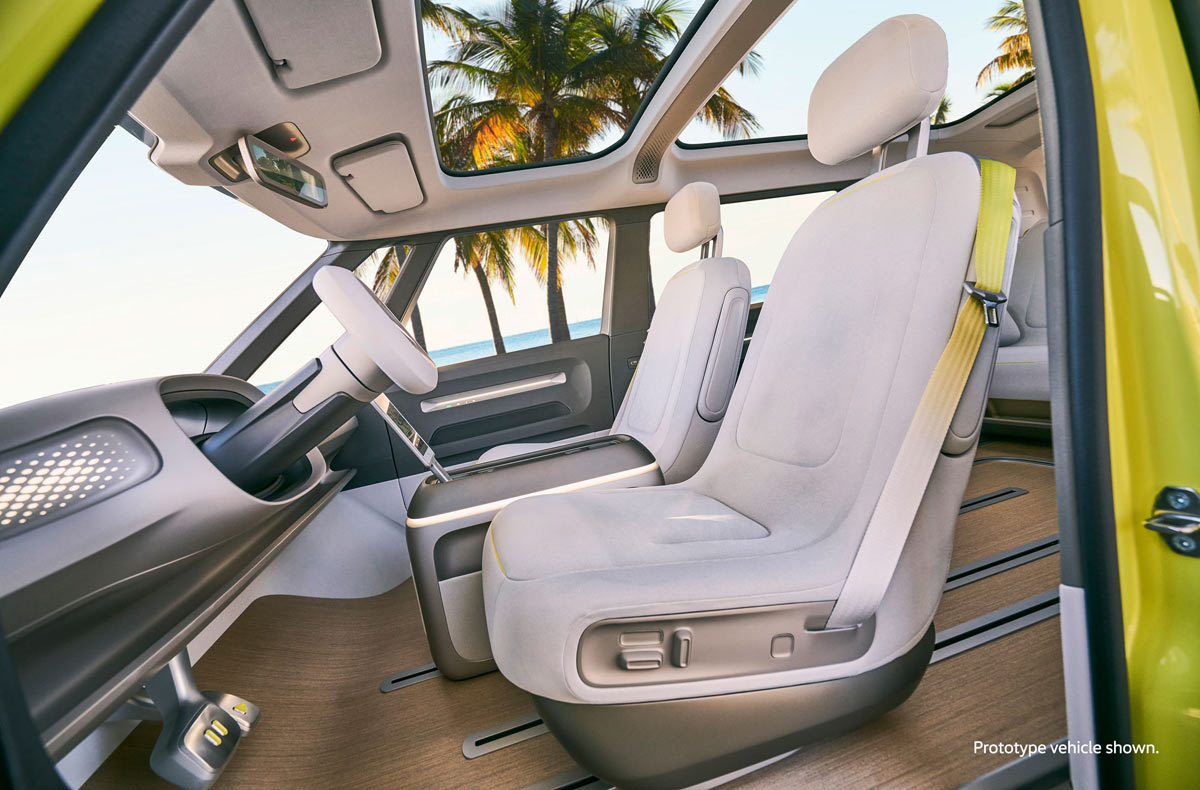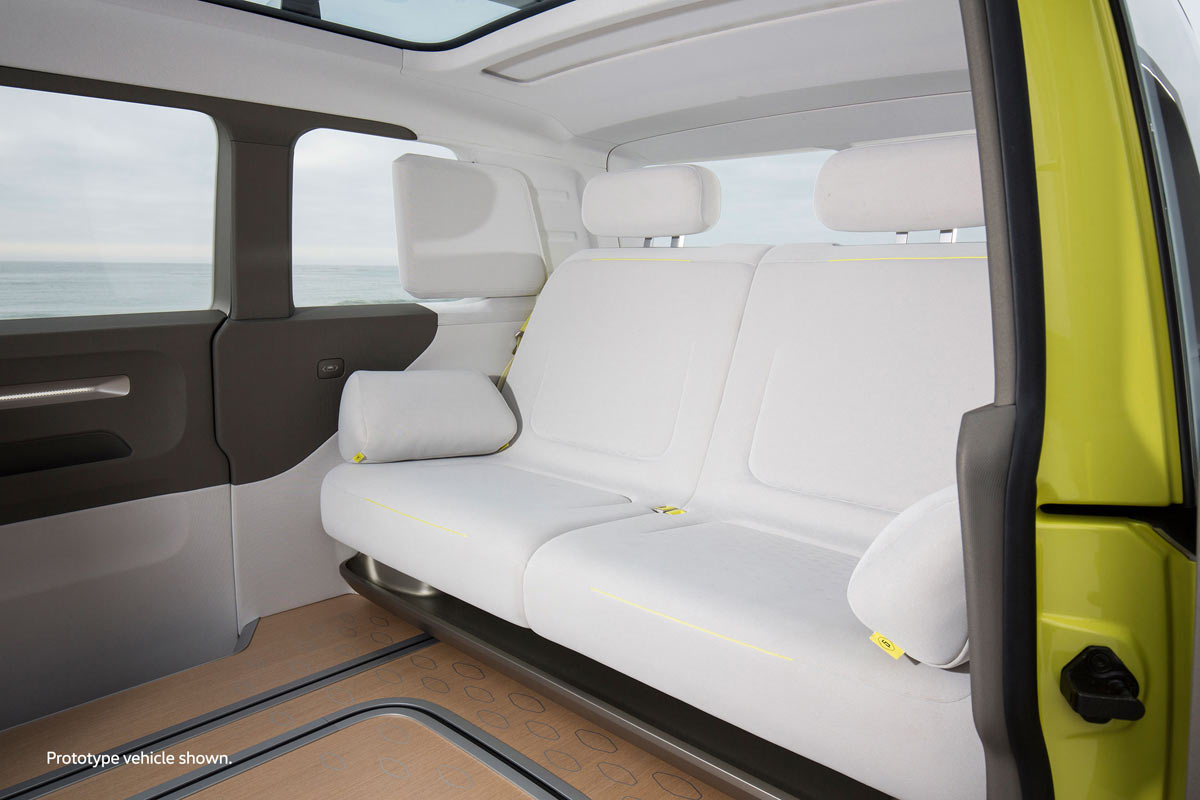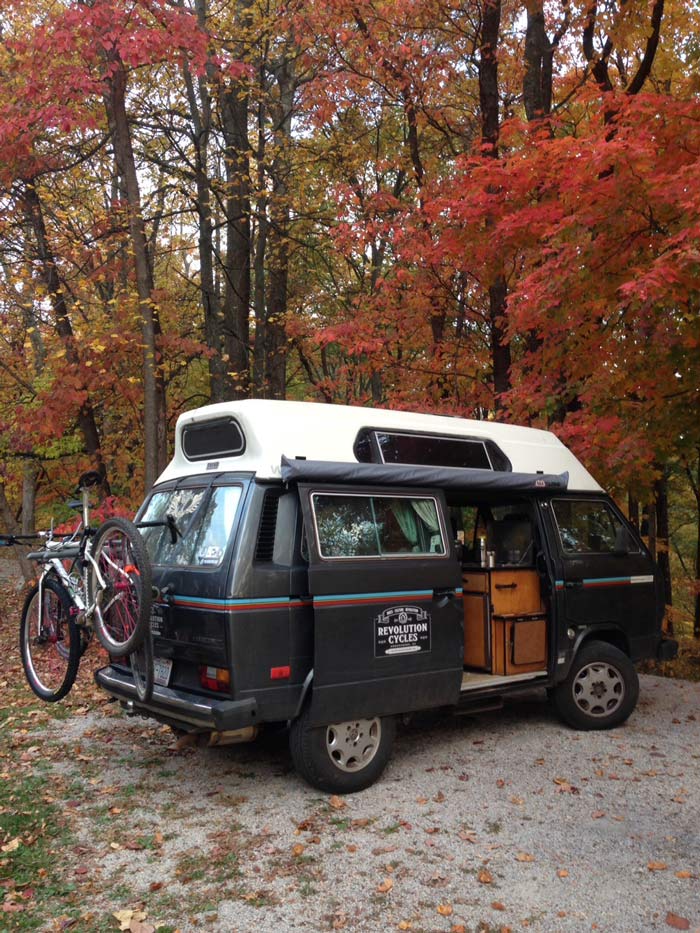Long before there was the Sprinter, hippies were converting the Volkswagen Bus into roaming homes, traveling wherever their visions led them. Since then, it’s become one of the most iconic vehicles on the road. It’s been a while, but the seventh generation of the VW Bus is on its way. But will it work as a proper adventure van? Or should you look to older models for a miniature camper?
This concept was shown at the Detroit Auto Show and is planned as a 2022 model. So you’ve got some time. The design uses familiar lines, but is fully modern with planned autonomous driving, all-electric drivetrain with a 270 mile range, and modular interior that seats up to eight people. Or sleep two.
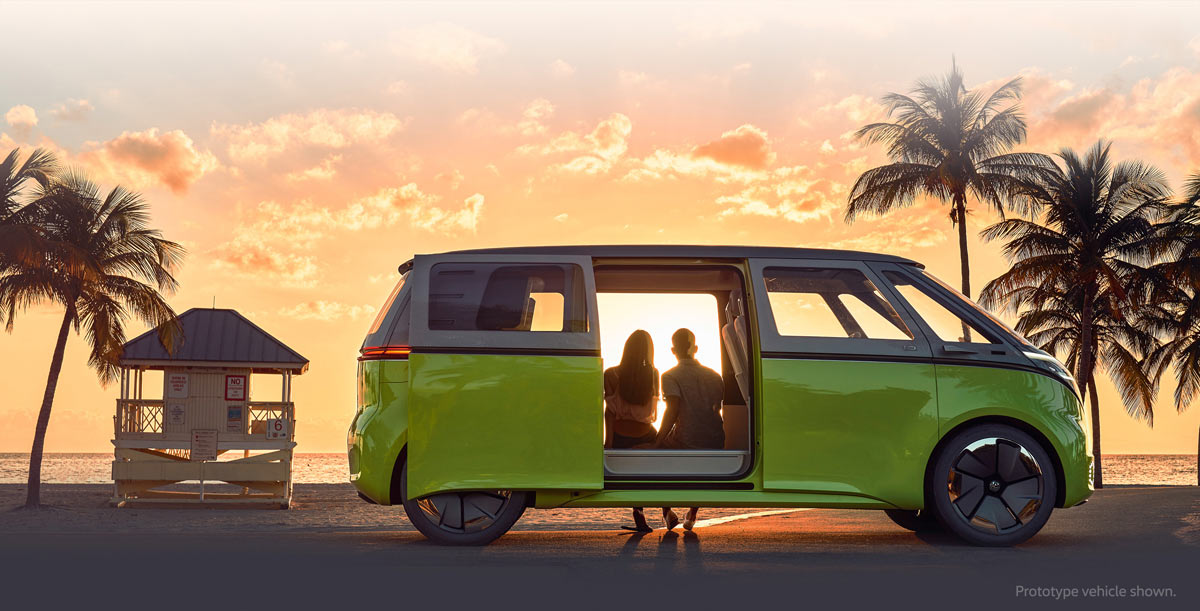
Technically, there were two types of VW Bus – The Bus, which was more rounded and had that classic “VW Bug” aesthetic, and the Van or Vanagon, which was boxier and came later in their model years. This new ID Buzz seems like a blend of the two.
A completely modular interior lets you move and fold seats to create room or beds (see video). The pillows and headrest pads on the windows could make for much comfier road trips for passengers.
Our first impression is that this new ID Buzz concept is really more of a people mover than a true adventure van. No doubt there’ll be conversions and sweet concepts at SEMA (and the real world) once it debuts. But with a nearly full glass panorama ceiling and 22″ rims, we don’t see too many folks popping for the likely high base price and then spending another big chunk to add a pop-up roof and offload-capable tires. Time will tell. And we have time. So what about upfitting an older model?
Converting a VW Bus into an Adventure Van
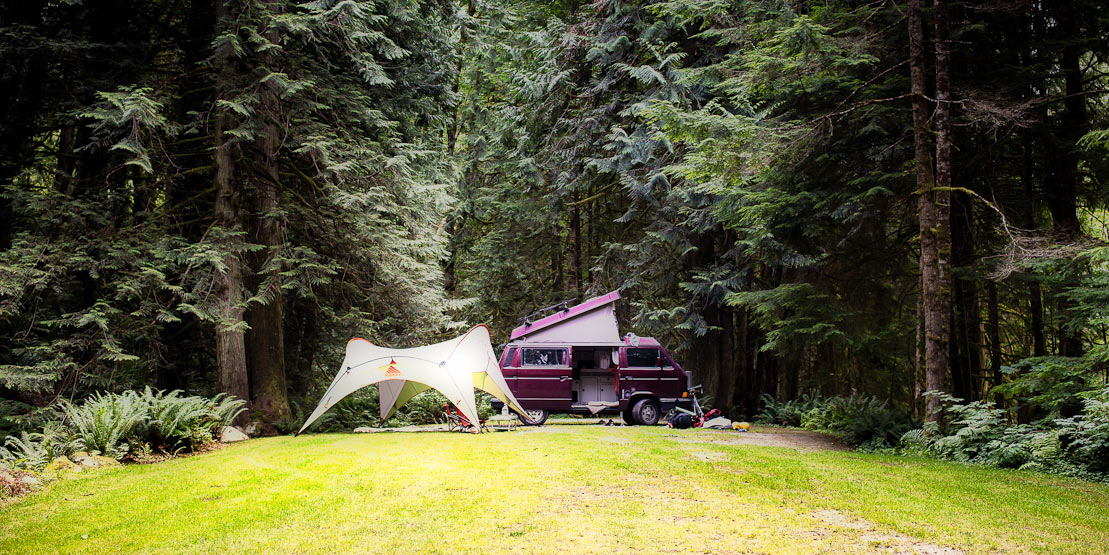
The Internet is awash with galleries of VW van conversions. The two shown here come from Peace Vans in Seattle, which handles everything from minor fixes to complete restores and upgrades with new drivetrains, Recaro leather interiors, and more.
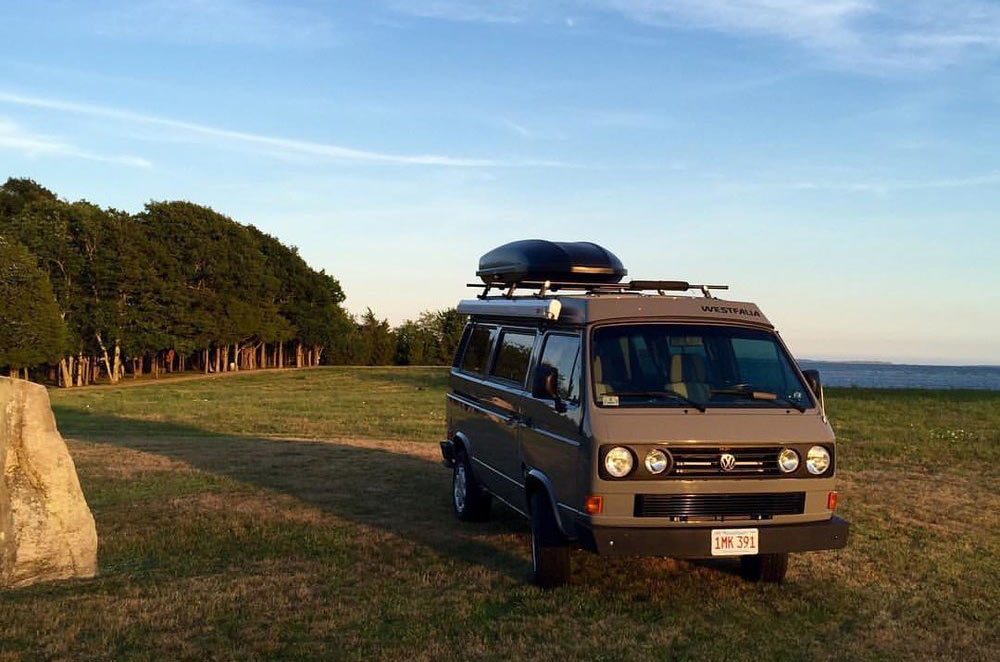
But you’ll need to consider is cost. The 1985 Vanagon conversion shown above had a budget of $75,000 and a year to complete, excluding the cost of the vehicle itself. For that amount of coin, you’d need to really be a fan of the model when that same amount could by a new Ford Transit or Sprinter and leave a little for light customization. Or a well-equipped used one.

Many of these vans end up getting (or needing) an engine swap, and sometimes a new transmission, too. These mods can easily add much needed horsepower and improved fuel efficiency. The engines and parts aren’t all that expensive, but it’s a pretty big job to do the full conversion yourself. If you find your own Subaru engine, you can get the complete adapter kit from a company like Rocky Mountain Westy for around $2,700 (not including the engine) which should make for an easy install.
Or, if you’d rather have it done by the professionals, VW specialists like Peace Vans or the Buslab can do it for you. Because of their location in California, Buslab conversions must be California Smog Legal which is why they use a Subaru 2.2 engine. Outside of California, there are a few other engines that tend to be popular depending on how much power and price you want to add. Buslab conversions start at $19,600. That may sound like a lot, but if you find the right used van for a low price and do the engine swap, you could probably turn around and sell it for a profit in a few years thanks to their high demand.
Due to the vast differences in condition, model year, desirability, and model, prices for used buses and vans vary wildly. You can find pretty clean vans from the 80’s for $5-10k in the right parts of the country, or you can spend upwards of six figures for fully restored buses.
Watts’ van has been up and down the East Coast, fueling many a solo adventure.As Watts has pointed out in his travels, perhaps the biggest downside to the VW bus or van is a complete lack of room for your bike(s) inside. Yeah, you could probably cram one in there, but it’ll make the back of the van unusable for anything else while it’s there. And it could be dirty. That means your bikes are left in the elements and exposed to theft.
If it sounds like we’re down on VW vans and busses as proper adventure vans, there are upsides. They’re small and maneuverable, meaning you can park them just about anywhere. For solo trips, they have plenty of room. And for couples, they’re cozy. A pop-up roof provides adequate sleeping without giving up the “living room” in the rear. Small kitchen pods are easily integrated, and proper gas/water plumbing for shore power and hookups can be done.
At the end of the day, you need to be honest about what’s most important to you. Do you want to keep bikes inside and be able to stand upright? Or are you looking for the most compact package to get you out on the road? Speaking from experience, there are tradeoffs to every setup. The trick is finding the one with the most upsides for your lifestyle.
